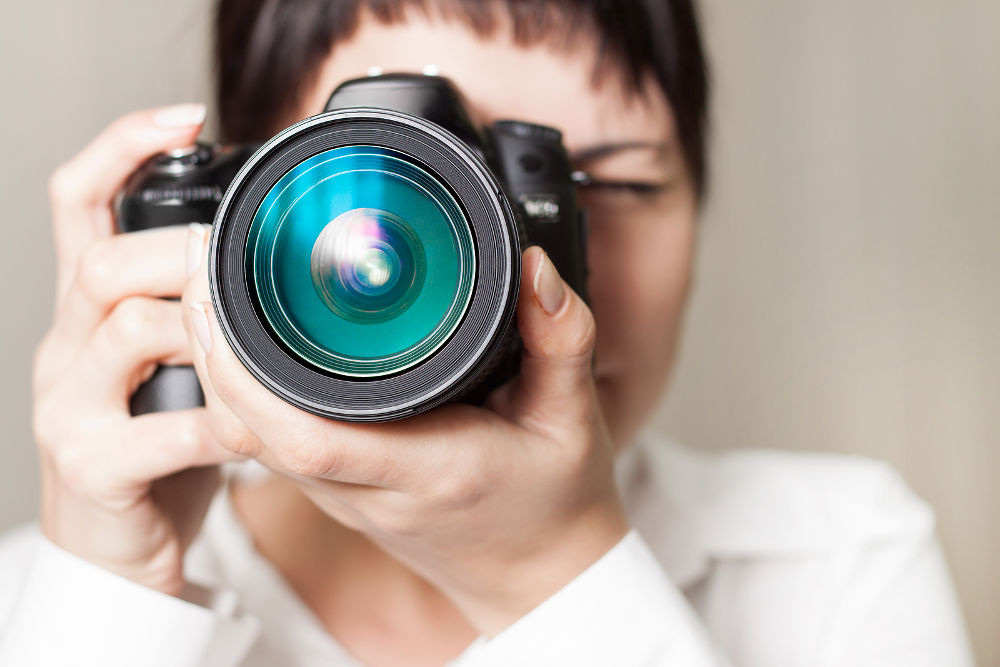Whether you’re an occasional Instagrammer or a casual hobbyist, the ability to beautifully capture a moment in time with your camera is the key to creating lasting memories – but if your photography skills still leave a lot to be desired then now is the perfect time to bring them up to scratch.
Improving your photography can be both fulfilling and creatively challenging, and the good news is that it couldn’t be easier. Whether your camera of choice is an iPhone or a professional DSLR, with a few simple tweaks and tips, you could quickly take your photography to the next level and promote your snaps from zero to hero. Here are some easy ways to get started now.
Master your camera settings

If your general approach to photography is to simply point and shoot, then you’re missing out on the plethora of settings on offer that could change your photography game entirely. One of the best things you can do to uplevel is to take some time getting to know them and understand what they do, so that you can get a feel for which ones to leverage and when to do so. While shooting in automatic is quick and convenient, manual control gives you the freedom to experiment and tailor your images to your vision, and getting to grips with some of the most basic is all you really need to start seeing a difference in the quality of your images.
The aperture setting, which controls the depth of field of your photos, is a great place to start. A lower f-stop such as f/1.8) offers a shallow depth of field, and is ideal for portraits with a blurred background – while on the flipside, a higher f-stop (such as f/16) will ensure that more of the scene you’re capturing remains in focus, so if you’re shooting a landscape then it’s a great tool for this.
The speed at which the shutter opens and closes is also important. Known as shutter speed, it determines how motion is captured. Faster speeds are excellent for action shots – for example if you’re photographing a sports event – because they freeze motion, capturing a split second in time – while a slow shutter speed can create artistic blur (such as light trails), making it a fun choice for arty night time shots.
The last setting that it’s really worth understanding is the ISO, which affects your camera’s sensitivity to light. A lower ISO (100-400) is the best choice for bright conditions, while a higher ISO (over 800) is helpful in low-light situations.
Experiment with these settings and learn how they work together in different lighting conditions to take full control of your photography.
Understand lighting

Lighting is one of the most important elements of photography, and can make a real difference to the quality of your images. By learning how it impacts the results, you’ll come to learn when is best to get the desired shot, as well as how to make the best of the lighting conditions you have if you don’t have much time to work with.
One of the best times of day to set up a photography session for is ‘golden hour’ – which is essentially either just after sunrise, or just before sunset. At these times of day, the soft, golden glow of the light creates flattering shadows and a sense of warmth, adding a really appealing quality to your photos.
Generally speaking, your best images will be captured in natural light. If you’re taking photos indoors, then position your subject near a window or open door, or leverage diffused natural light to avoid harsh shadows. Artificial light sources like lamps can be helpful where natural light is limited, and reflectors and diffusers can help to soften shadows to create balance.
Understanding how to play with the light available to you to enhance your subject can dramatically elevate the quality of your photos – so again, experiment with different timings and set-ups until you get a feel for what works best for the type of shots you’re hoping to capture.
Master image editing

Creating the perfect shot doesn’t end after you’ve snapped it, and post-processing is an equally important step of the process in modern photography. Today, there are a myriad of editing tools available that promise to elevate your images no end – but it’s essential that you know what to do with them to get the best possible results.
No matter how great a photo already is in-camera, image editing can still make it that bit better, because it allows you to fine-tune elements like exposure, contrast, colour balance, and sharpness to transform your photo and take it from good to great. Try a colour editor app like Retouchme to enhance colours, which can be achieved by gently increasing vibrancy and saturation to get an image that really pops – but be careful not to over-edit, and bear in mind that in this context, less is always more. Always go in with a light hand, and try other tweaks such as increasing the exposure to brighten up images that are too dark or decreasing it to remove excessive brightness where necessary. You can also lift shadows and tone down highlights to recover details in a landscape shot, or use color grading to add a specific mood to a portrait.






















